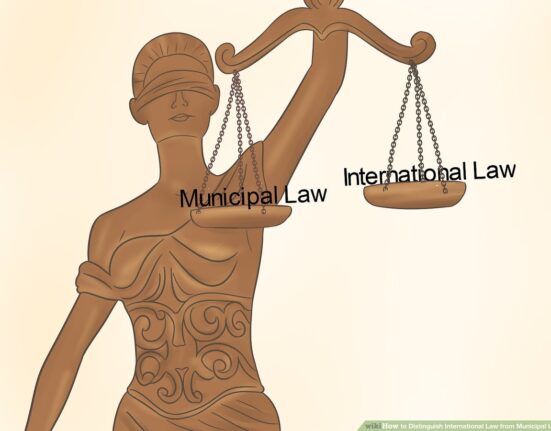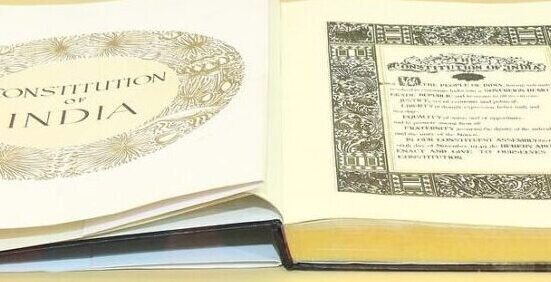This article, “Atrocities of Sexual Violence in Armed Conflicts and Wars” is written by Vijetha Saishree Palle a 1st year Law student at Symbiosis.
INTRODUCTION
Sexual abuse, all through armed rebellion and warfare, is not novel but, in fact, a widespread practice. Sexual brutality as a weapon of armed dispute is a bothersome aspect and has been prevalent throughout the history of Indian warfare. This is a significant breach of primary human rights and an issue that affects not only the person who has suffered it but also their families and the different communities. These atrocities have propionate and enduring effects on the victim, be it psychological or physical. The article aims to delve into the multifaced concept of sexual abuse in armed clashes and warfare, shedding light on various forms of violence and discovering the root cause for the same.
PRIMARY CAUSES
The primary root cause of the ruthless abuse of sexual autonomy is profoundly embedded in the societal structure. During wars and conflicts, lower-class people are seen as a significant target of sexual violence. This often happens due to the power imbalance between genders and their socially constructed roles. Women, as well as men, are scared or in grave fear of even raising a voice against the upper-class people who torture them mentally as well as physically. The power of different classes seems to play a significant role during wars. Sexual violence during wars consists of victorious soldiers considering women as property to use for their pleasure. Women are also considered a means of troop mollification, wherein they are forced into sexual slavery for the men in the military.
Sexual violence is intrinsically a gender-based phenomenon, targeting women and girls. This brutal weapon is initiated with the patriarchal power dynamics enshrined in India and world history. Men who consider themselves superior to others sexually violate women to degrade the pride of the male member of the family who, because of having no power, was unable to protect the women of their house. This not only destroys the pride of the men but also of the community. It can also be used as a form of punishing women who are either associated with people who are politically active or are themselves politically engaged. Furthermore, a philosophy of impunity tolerates the perpetrators to escape accountability and liability, which acts as a catalyst in the continuous cycle of abuse and violation. Even though menfolk are also victims, womenfolk are the primary targets and are the most affected gender.
REAL-LIFE OCCURRENCE
An example to better understand the topic would most definitely be the sexual violence prevalent during World War II. Sexual harassment from the World War II era was a hidden atrocity. The historical records do not have sufficient information about sexual violence prevalent at that time, not because it didn’t occur but because it was not considered very ethical or people were not very comfortable at that time to openly discuss or write about sexual violence, and neither were there any supporters who would stand against this act and raise a voice. Everyone accepted this as a harsh and unfortunate reality that no one could change.
Numerous women faced the heinous crime and abuse at the hands of nazi officials and guards, enduring unspeakable horrors along with the tragic instance of the holocaust. During World War II, the Japanese army forced a large number of Asian women and girls into military sexual subjugation. The term often used for these women was “comfort women”. The womenfolk were raped multiple times daily at the military comfort houses by the soldiers. The commanding officers encouraged the soldiers to use the comfort women as a means of relieving their stress and elevating their spirits to stabilise their mental trauma. The simple definition of rape is physical harm. But because of sexual violence during wartime, it is also a death sentence for a lot of women. Women have been affected by HIV. These women didn’t have any economic support, so to survive, they engaged in sexual activity, due to which many women became infected with HIV.
The end of World War II left a scar on everyone’s life, including the traumas of the holocaust and the horrors of sexual and physical abuse. The outcome of World War II inspired the four Geneva Conventions adopted in 1949, which were initiated by the International Committee of the Red Cross and aimed at improving the situation of the victims, especially women. The provisions in this treaty included the protection of women who were pregnant and nursing mothers, and specific provisions explicitly dealt with sexual violence as well. This was a landmark and forward-looking step towards recognising and condemning sexual violence as an outrage in the armed. The survivor and advocate worked towards a forward-looking aim to bring the issue of sexual violence in conflict into the limelight. Their efforts aided the transformation of international laws about sexual abuse during disputes. These convections testify to a committed goal to ensure that past horrors are not relived.
The sexual abuse in the state of Gujrat during the 2002 communal violence was a dark chapter in Indian history. Many women, irrespective of their background, were subject to sexual violation and other kinds of abuse. The survivors, in addition to this crime, also face immense challenges and hurdles in seeking justice and rehabilitation. The well-known case was of a survivor who survived gang rape and witnessed the murder of her family members. These cases underscore our moral and legal responsibility as a community to provide justice, healing and reconciliation to all the victims.
The Rwandan Genocide of 1994, a horrific event that claimed the lives of an estimated 800,000 people, was not only marked by ethnic violence but also by widespread sexual violence against women and girls. This case study delves into the systematic and general nature of sexual violence during the genocide, highlighting the brutal tactics employed by extremist groups. Sexual violence took many forms, including rape, sexual slavery, and the use of sexual violence as a means to humiliate and dehumanise victims. The impacts of these atrocities were profound, affecting not only the physical well-being of victims but also their psychological and social lives. The trauma of sexual violence often led to the breakdown of families and communities, contributing to the ongoing cycle of violence and conflict in the region.
In the aftermath of the genocide, international organisations and local NGOs have worked tirelessly to address the issue of sexual violence. This includes the establishment of the International Criminal Tribunal for Rwanda (ICTR), which prosecuted individuals responsible for the genocide, including those who committed sexual violence. Additionally, there has been a push for justice and reconciliation, with efforts to document and publicise the atrocities committed during the genocide. Despite these efforts, the legacy of sexual violence in the Rwandan Genocide remains a painful reminder of the depths to which humanity can sink in times of conflict.
The Yugoslav Wars, a series of conflicts in the Balkans from 1991 to 2001, were marked by widespread sexual violence, particularly during the Bosnian War (1992-1995). The Bosnian Serb forces, under the command of Radovan Karadžić, were accused of committing systematic rape against Bosnian women and girls as a weapon of war. This case stands as a grim reminder of the severity of sexual violence in armed conflicts, where it is often used as a tool to exert control and dominance over the population. The International Criminal Tribunal for the former Yugoslavia (ICTY) played a crucial role in prosecuting these crimes, with Karadžić being found guilty in 2016, marking a significant step in holding those responsible accountable for their actions.
The Darfur Conflict, which began in 2003 in Sudan, was another tragic example of sexual violence in armed conflict. The conflict was primarily between the Sudanese government and the Sudan Liberation Movement/Army (SLM/A), with the Janjaweed militia committing numerous atrocities, including rape, against the civilian population. The International Criminal Court (ICC) issued arrest warrants for several individuals, including the former President of Sudan, Omar al-Bashir, for crimes against humanity, including sexual violence. This case highlights the importance of international justice in addressing the atrocities committed during armed conflicts, ensuring that those responsible are held accountable. The Syrian Civil War, which began in 2011, has been marked by widespread violence, including sexual violence against women and girls. The conflict has been characterized by the use of sexual violence as a weapon of war by various factions, including the Syrian government forces and opposition groups.
The United Nations has documented numerous cases of sexual violence, including rape, against women and girls. This case underscores the urgent need for comprehensive measures to prevent, address, and respond to sexual violence in armed conflicts and wars, particularly in contexts where access to affected areas is limited. These cases collectively underscore the global scale and complexity of sexual violence in armed conflicts and wars. They highlight the need for international cooperation and the enforcement of international law to hold perpetrators accountable and to protect victims. The persistence of sexual violence in these contexts serves as a stark reminder of the urgent need for comprehensive measures to prevent, address, and respond to sexual violence in armed conflicts and wars.
IMPACTS AND CONCEQUECES
The fighters of sexual violence often bear the impact of severe physiological and psychological trauma. The trauma is inscribed like deep scars in the minds of all the survivors and people connected to them. Moreover, the stigmatisation encountered by the victims escalated their suffering and often resulted in isolation and deviance from the communities as a whole. This isolation disseminates the suffering, creating a heartbreaking series of exclusion and agony that affects not just individuals but entire communities. To bridge the gap between the pain and agony, there is a prominent need for a holistic and multifaced support network and awareness campaigns to break the silence surrounding all the stereotypes of sexual violence and facilitate the healing and reintegration process.
THE WAY FORWARD
Common law article 3 is a crucial constituent of the Geneva Convention, specifically prohibits any form of violence against the basic unit of an individual, which is life and well-being. This also comprises the prohibition of a broad spectrum of violations such as murder, mutilation and any cruel treatment. Prominently, this provision condemns sexual violation as a brutal form of mistreatment and strictly forbids it. In addition, the customary International Humanitarian Law also encompasses provisions that expressly prohibit sexual violence in the state of affairs of armed conflict. This legal framework is obligatory on all individuals involved in armed warfare, making it an enforceable responsibility to avoid sexual violence.
The Rome Statute of the International Criminal Court establishes different forms of sexual harassment and crimes primarily based on gender, such as war crimes and crimes that are against fundamental human rights. This court has jurisdiction over the people who commit these crimes within the context of armed conflicts. These international courts and conventions put forward efforts to punish and prevent sexual violence from being prevalent or practised during armed conflicts and wars. By categorising the violation of an individual’s sexual autonomy as a war crime, they have expanded the level of accountability and sent a clear message that such crimes will not go unnoticed. These international courts and conventions have built a fortress against the scourge of brutal atrocities.
CONCLUSION
Sexual violence in armed conflicts and wars is a testament to the capacity to which human cruelty can reach, which should also be a reminder to humanity that together, collectively, we can change this practice. Sexual violence in armed violence is an upsetting reality that spotlights the worst aspects of human conflict. Considering several real-time incidents, it must be an urgent reminder that it is a collective play to alter this tormenting observation. By understanding the problems in a detailed manner, supporting the sufferers and survivors, punishing the perpetrators, and globally coming together to raise a voice against them, we can weaken and break the prevailing practice of sexual violence. Eliminating this crime demands our commitment to building a better world with safety for everyone.
REFERENCE
Mureithi, A. and Anita MureithiAnita have been involved with the OWP since early 2020. She is currently a Senior Correspondent writing as part of the European Division. She recently completed a master’s degree in International Relations where she focused on the analyses of (2020) Sexual Violence as a weapon of war, The Organization for World Peace. Available at: https://theowp.org/reports/sexual-violence-as-a-weapon-of-war/
Sexual violence: A tool of war – the United Nations. Available at: https://www.un.org/es/preventgenocide/rwanda/assets/pdf/Backgrounder%20Sexual%20Violence%202014.pdf







Leave feedback about this